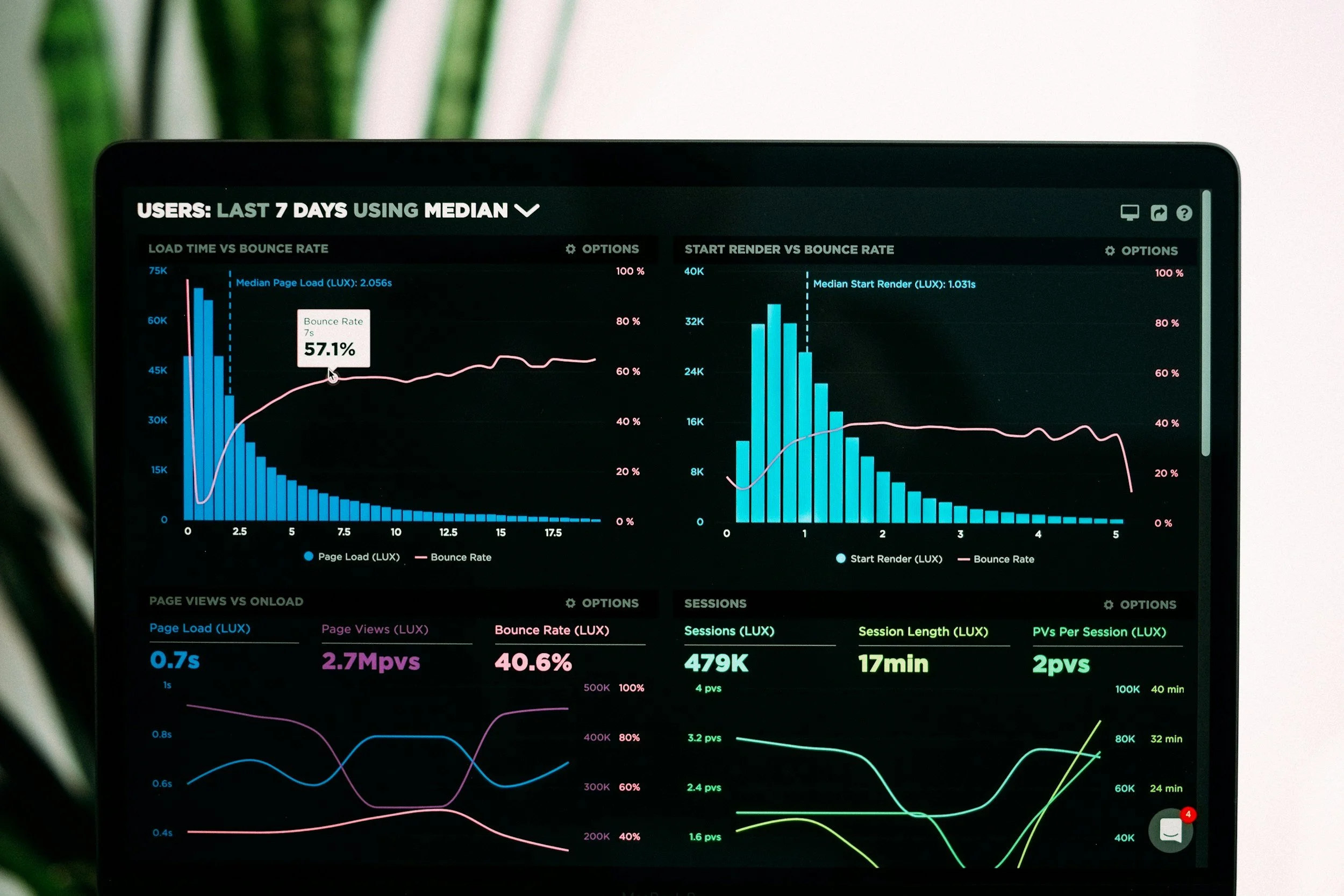What is ROAS? Everything You Need to Know
Example of a Performance Marketing or Business Dashboard.
When investing in advertising campaigns, one of the most critical metrics that your media agency may use for assessing performance is Return on Ad Spend or ROAS. It helps marketers understand how effectively their money is being used to generate revenue. Let's dive into what ROAS is, how it works, and why it's so crucial for advertising success.
Definition and Calculation of ROAS
ROAS stands for Return on Ad Spend, a metric that measures the revenue generated for every pound spent on advertising. It is calculated using the following formula:
ROAS = Revenue from Ads / Ad Spend
For instance, if you spend £1,000 on an advertising campaign and it generates £5,000 in revenue, your ROAS would be 5:1. This means you earned £5 for every £1 spent on advertising.
Why is ROAS Important?
ROAS is an essential metric for marketers for several reasons:
Evaluating Effectiveness: It helps assess the success of advertising campaigns, giving insights into which ads are delivering the best returns.
Budget Allocation: ROAS is instrumental in deciding where to allocate your advertising budget. Campaigns with a higher ROAS are more likely to receive more funding, as they are proven to be profitable.
Optimization of Ad Spend: By comparing ROAS across campaigns, channels, or creatives, you can identify opportunities to improve performance and maximize profitability.
Insights into Channels and Strategies: ROAS can help pinpoint which marketing channels, content types, or target audiences are driving the most value, allowing for better strategic decisions.
ROAS vs. ROI
While ROAS and ROI (Return on Investment) might seem similar, they are distinct:
ROAS focuses solely on the revenue generated compared to advertising spend, giving a clear picture of ad performance.
ROI, on the other hand, takes into account total costs, including overhead, salaries, and other operational expenses, providing a broader view of profitability.
Essentially, ROAS is specific to marketing and advertising, whereas ROI applies more broadly to the overall business.
What is Considered a Good ROAS?
There is no universal benchmark for a good ROAS as it varies across industries and depends on specific campaign goals. However, a few general guidelines can be helpful:
4:1 is often considered a standard benchmark. This means for every pound spent, you should generate £4 in return.
High-value industries, like luxury goods or software, might aim for a ROAS of 10:1 or higher.
On the other hand, lower-margin industries, such as consumer goods, might find 2:1 or 3:1 acceptable.
Ultimately, what constitutes a “good” ROAS will depend on the profitability goals and business model of each advertiser.
Important Caveats about ROAS
While ROAS is a useful metric for evaluating advertising performance, it's important to note that it does not provide a complete picture of profitability. ROAS only considers the revenue generated from ads relative to the advertising spend, without accounting for other costs such as product costs, overhead, or operational expenses.
For example, a campaign with a high ROAS might not necessarily be profitable if the product margins are low or if there are significant additional costs involved in producing and delivering the product. Therefore, while ROAS is an excellent indicator of how effectively your advertising spend is driving revenue, it should always be considered alongside other financial metrics, such as profit margin and overall ROI, to ensure the true profitability of your campaigns.
Additionally, the higher the price of the item you are selling, the higher the potential ROAS, as the return is much bigger in comparison to the average digital marketing cost. However, even with high-priced items, ROAS can sometimes be low, especially if the product has a long sales cycle. In such cases, the time required to nurture leads and convert them into customers can result in lower immediate returns, despite a higher ticket price.
Success Stories and Examples
Consider an e-commerce brand that spent £10,000 on Facebook Ads and generated £50,000 in sales. With a ROAS of 5:1, this campaign clearly demonstrated success in generating revenue well above the advertising cost. Such a high ROAS suggests that their targeting strategy and ad creatives were highly effective in engaging potential buyers.
Another example is a niche fashion retailer that invested £2,000 in Google Ads and achieved £6,000 in sales, achieving a 3:1 ROAS. While this ROAS might seem modest compared to the previous case, the retailer's goal was to drive new customer acquisition, which often requires a larger investment upfront. Since they gained a substantial number of first-time buyers, they could still consider this a successful campaign.
Applications of ROAS in Digital Marketing
ROAS is widely used to measure the performance of different aspects of digital marketing campaigns:
Evaluating Channel Performance: By tracking ROAS for different channels, such as Google Ads, social media, or email marketing, advertisers can determine which channel drives the best returns.
Optimizing Budget Allocation: Based on ROAS, marketers can allocate more budget to higher-performing campaigns and adjust or halt underperforming ones.
Creative and Targeting Insights: ROAS also helps assess which ad creatives and targeting strategies are the most effective. Ads with higher ROAS are often used as templates to replicate success.
Maximizing ROAS: Tips for Improvement
To increase ROAS, here are a few strategies marketers can employ:
Refine Targeting: Focus on reaching audiences that are most likely to convert by utilizing data-driven segmentation and retargeting strategies.
Test and Optimize Creatives: Experiment with different ad creatives to understand which designs and messages resonate best with your audience.
Improve Conversion Rates: Enhancing the quality of your landing pages and simplifying the checkout process can boost conversion rates and, in turn, improve ROAS.
Monitor Campaigns Regularly: Keeping a close eye on campaign performance helps identify opportunities to tweak ads, adjust budgets, and respond to trends in real-time.
Conclusion
ROAS is a critical metric that provides insight into how effectively your advertising spend is driving revenue. Whether you're a small business or a large enterprise, understanding and optimizing ROAS is key to maximizing the return on your marketing investments. However, it's important to remember that ROAS is just one piece of the puzzle. To get a complete picture of profitability, ROAS should be used in conjunction with other financial metrics, ensuring your campaigns not only drive revenue but also contribute to the overall profitability of your business. By analyzing which campaigns work best and continually refining your advertising efforts, you can ensure your marketing budget is used in the most effective way possible.












